Doing your homework on solar panel dimensions can really come in handy if you’re planning to power your house or RV with solar energy. Here’s why:
Your first task when setting up a solar energy system is to estimate your energy needs. With this, you can calculate the number of solar panels you’ll need according to their wattage.
But that’s not all; you also need to know how many panels you can fit into your desired space. This is where knowing the average dimensions of solar panels (according to their wattage) comes into play!
In this article, we provide you with standard solar panel dimensions.
In addition, we’ll discuss the factors that dictate solar panel size, the standard size of a solar cell, and the thickness of solar panels.
Table of Contents
Solar Panel Dimensions Chart
Here’s a chart containing the most commonly found solar panel dimensions for different nameplate ratings (wattages):
Imperial System
| Solar Panel Wattage | Solar Panel Dimensions (L x W x H) |
|---|---|
| 50 W | 23 x 20 x 1.2 inches |
| 100 W | 40 x 22 x 1.3 inches |
| 200 W | 58 x 27 x 1.4 inches |
| 300 W | 65 x 39 x 1.4 inches |
| 400 W | 78 x 40 x 1.4 inches |
| 500 W | 89 x 44 x 1.4 inches |
| 600 W | 96 x 45 x 1.4 inches |
The most commonly used solar panel for residential applications is the 300W panel (65 x 39 inches). However, 100W and 200W panels are also widely used for smaller projects, like an RV solar energy system or smaller houses.
High-energy panels — 400W, 500W, or 600W, are usually used for commercial applications or big houses with high energy demand.
Metric System
| Solar Panel Wattage | Solar Panel Dimensions (L x W x H) |
|---|---|
| 50 W | 58 x 51 x 3 cm |
| 100 W | 102 x 56 x 3.3 cm |
| 200 W | 147 x 68 x 3.5 cm |
| 300 W | 165 x 99 x 3.5 cm |
| 400 W | 198 x 102 x 3.5 cm |
| 500 W | 226 x 112 x 3.5 cm |
| 600 W | 244 x 114 x 3.5 cm |
It is important to note that the above table shows the most commonly occurring solar panel dimensions for each wattage.
However, these numbers can vary according to the solar panel model, manufacturer, efficiency, material used/frame size, etc.
The best way to know if you’ll be able to fit your solar panels in your desired space is to check their dimensions before buying them.
Related Reading: How To Read Solar Panel Specifications
What Dictates Solar Panel Size?
Two primary factors dictate solar panel size:
- Solar panel wattage (quantity and size of solar cells)
- Type of solar panel (quality of materials used)
Solar Panel Wattage
Solar panels are rated by their wattage, that is, by how much power they can produce.
Power is a product of current and voltage, which can be increased according to the number (and the size) of solar cells used and the type of wiring that connects them. For example, 10 solar cells connected in series would output 5V.
However, the amperage (current) varies according to the size of the solar wafer (semiconductor). So a smaller solar PV will generate fewer amps due to less semiconductor area for current to pass.
Solar Wafer
A solar wafer is a thin slice of crystalline silicon used to manufacture solar cells. This wafer converts sunlight energy directly into electrical energy.
Here’s an interesting video showing how solar wafers are made:
Because the area of semiconductors (size of solar cells) is directly proportional to the amperage generated, you’ll sometimes find two panels with varying solar cell amounts but the same wattage rating.
Example
The image below shows two solar modules — one has 36 cells, and the other has 60 cells — with the same wattage rating (150W).
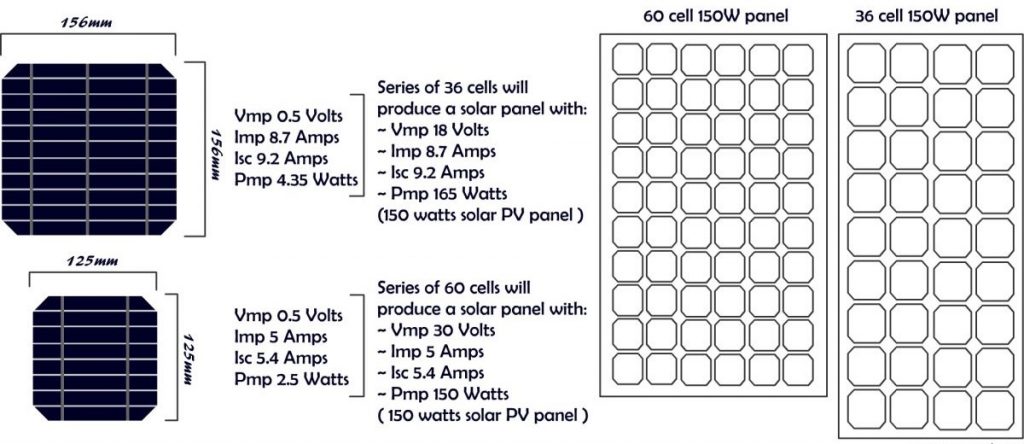
How is this possible?
As previously stated, the size of the solar cells (that is, the area of the semiconductor) is directly proportional to the amperage. So a larger cell produces more amps.
However, more cells connected in series produce a higher voltage. So 60 cells in series result in a higher voltage than 36 cells connected in series.
In the end, you have one panel with a higher voltage and a lower amperage and another with a lower voltage and a higher amperage.
And since power is a product of voltage and amperage, the output power of both panels is the same.
Therefore, the size of a solar panel is proportional to its wattage. The wattage, in turn, depends on the number of solar cells (determines voltage) and on the dimensions of the solar cells (determines amperage).
A standard solar PV cell typically has an open circuit voltage of 0.5 V and a short circuit current of 3 amps. When solar cells are connected in series, their voltage is added.
Summary
The number of solar cells, their size, and how they are wired will determine how much power a solar panel produces (wattage) and, consequently, the size of the solar panel.
So ultimately, the higher the solar panel wattage, the more solar cells it needs to achieve that rating. Thus, the bigger the overall panel size.
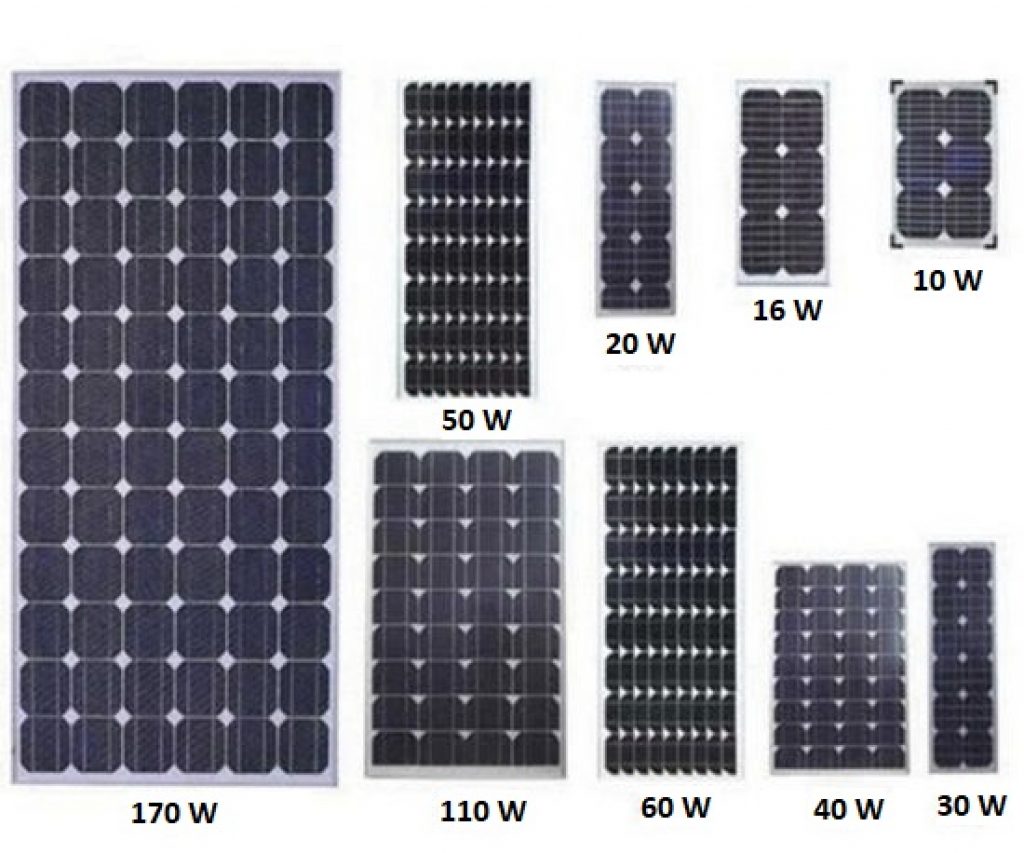
Solar Panel Type
The type of solar panel (monocrystalline, polycrystalline, or thin film) also dictates how many solar cells are needed to achieve a certain wattage.
For example, monocrystalline cells are more efficient than polycrystalline cells. As such, a smaller monocrystalline panel (with fewer solar cells) can produce the same amount of energy.
In other words, polycrystalline cells produce less power per square foot, so they are not as space-efficient as monocrystalline cells.
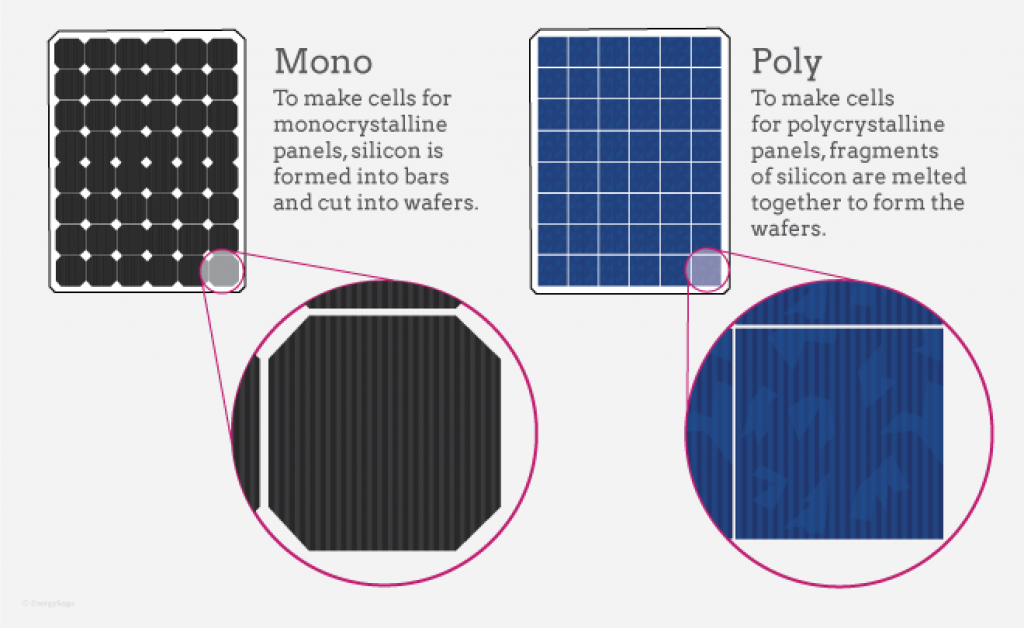
Source: solarchoice.net.au
Related Reading: How To Build DIY Solar Panels Step-By-Step Instructions
What Is The Standard Size Of A Solar Cell?
For a long time, the standard size of solar cells was 156 mm by 156 mm, approximately 6 inches long and 6 inches wide.
However, thanks to the advancements in solar technology throughout the years, there are now different solar cell sizes:
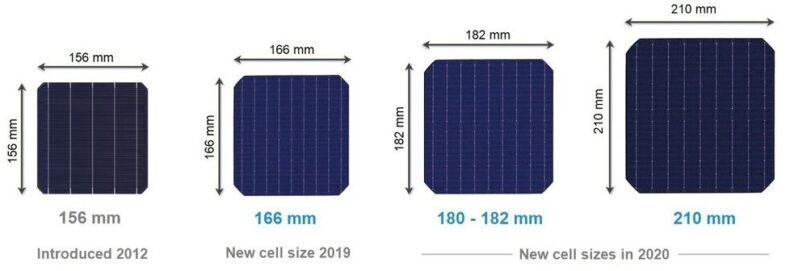
Source: cleanenergyreviews.info
As previously mentioned, the size (and the amount) of solar cells dictates the power output of a solar panel. For this reason, most powerful solar panels are built with larger solar cells, usually 210mm or 182 mm cells (considered the new standard size of solar cells).
However, larger cells tend to be more expensive because more material is used.
Half-Cut Solar PV Cells
In 2014, a new type of PV was developed, the “half-cut solar photovoltaic cells,” pioneered by REC solar.
These solar cells have a rectangular shape cell instead of a square shape:
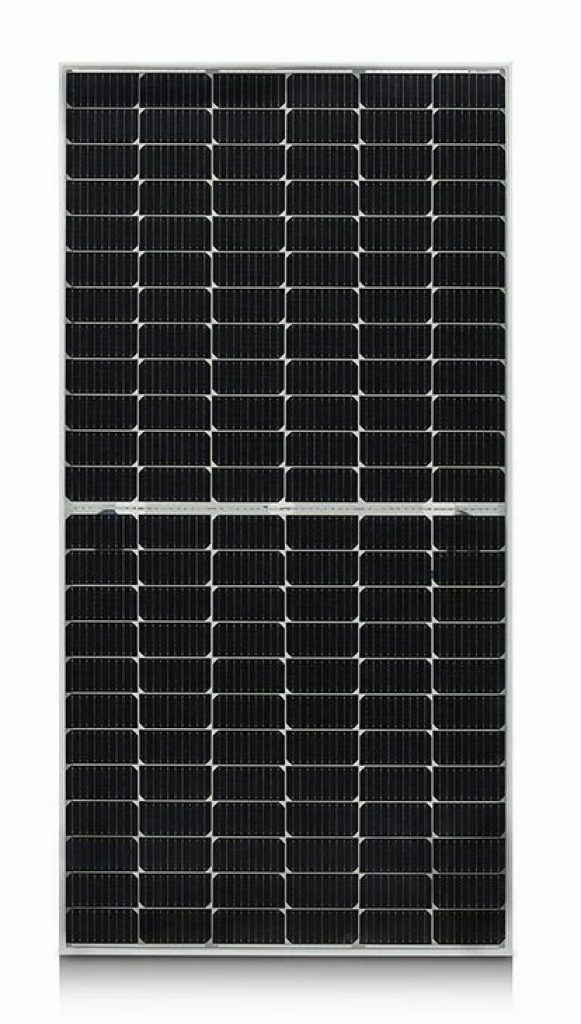
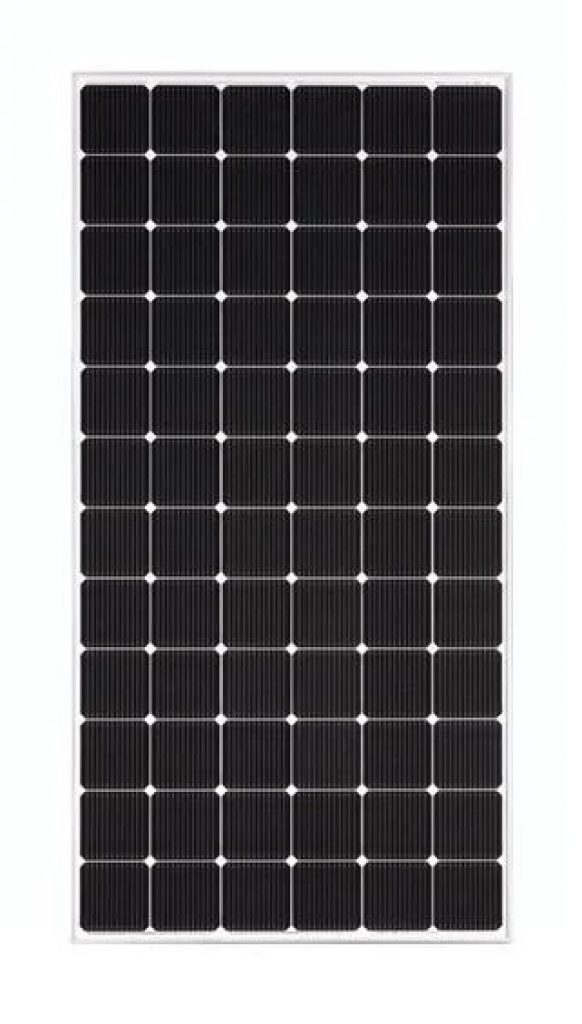
Source: lg.com
The dimensions of these half-cut solar cells are around 3 inches x 6 inches, or approximately 75 mm x 150 mm.
This type of solar cell was designed to increase the power output of solar panels. Since these solar cells are cut in half, you can fit more cells into a regular-size solar panel.
Traditional monocrystalline solar panels typically have 60 to 72 solar cells, so when those cells are cut in half, the number of cells increases.
Half-cut panels have 120 to 144 cells, which increases the open circuit voltage, thus increasing the power output.
Their unique wiring system also compensates for inefficiencies, so the most recent high-energy solar panels use this type of solar cell.
How Thick Are Solar Panels?
The thickness of standard solar panels – the ones you usually see installed on the roof of houses – varies between 1.2 to 1.5 inches (approximately 30 to 40 mm).
These solar panels are typically made with monocrystalline or polycrystalline solar cells.
However, the thickness of solar panels is primarily due to the several layers that form a solar PV panel, rather than the solar cells, which are very thin (only a few millimeters thick).
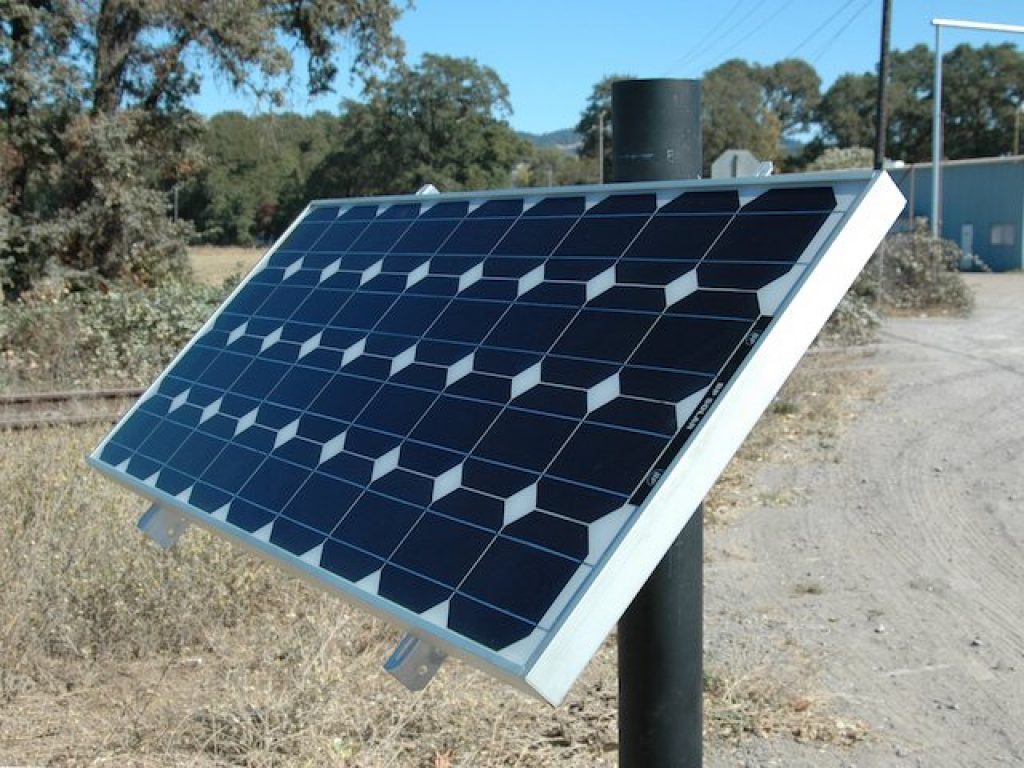
Source: tamaracksolar.com
Layers Forming A Standard Solar PV Module
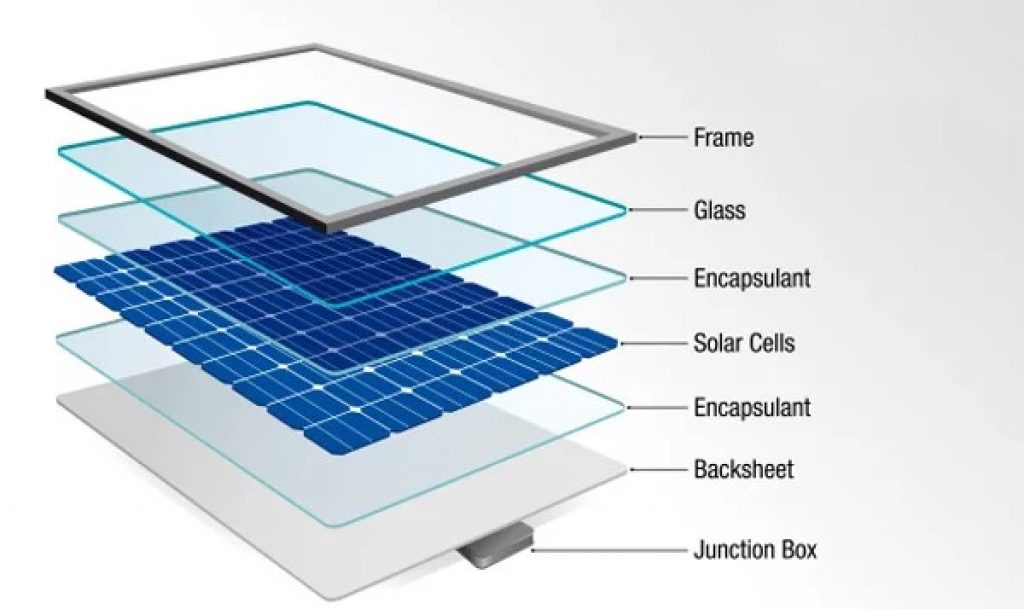
Source: aluminumsolarframe.com
The glass layer that protects the solar cells is the thickest and, along with an encapsulant material (usually EVA film) and back sheet, is primarily responsible for the thickness of THE solar panel. The layers are all held together by an aluminum frame.
Therefore, the thickness of the frame can vary according to the thickness of the layers it has to hold.
The most common aluminum solar panel frame sizes are 1.2 inches, 1.4 inches, and 1.6 inches (30 mm, 35 mm, and 40 mm).
There is, however, a third solar panel type, called a “thin-film solar panel.”
Thin-Film Solar Panel
This type of solar panel is flexible; it doesn’t have a thick, hard glass layer or an aluminum frame.
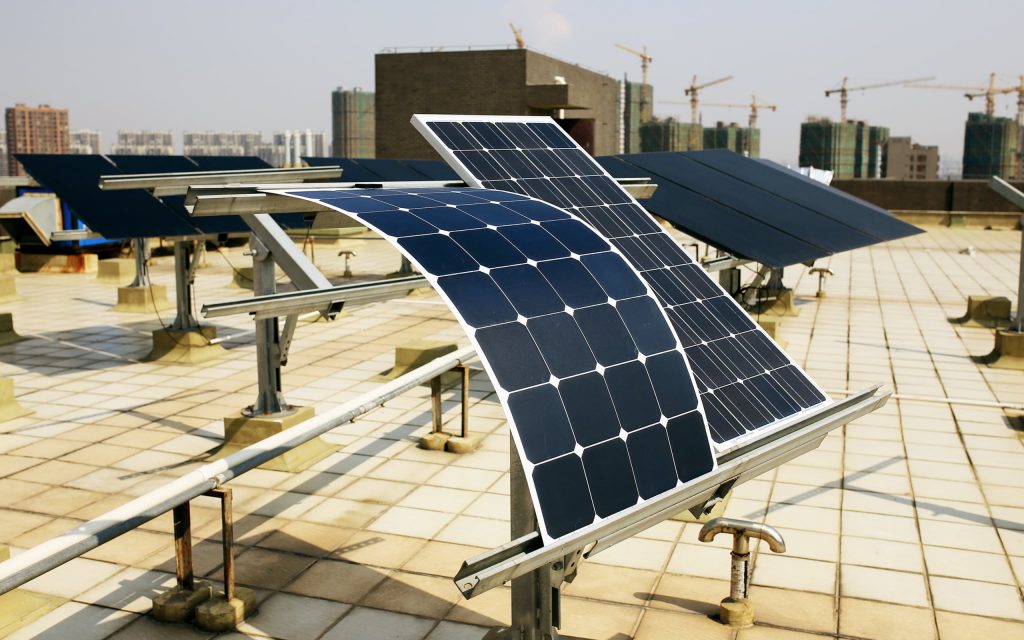
Source: goexplorer.org
For this reason, it is much thinner than a monocrystalline or polycrystalline solar panel.
The thickness of thin-film solar cells can vary between 0.4 to 0.8 inches (10 to 20 mm).
However, some solar panels use a thin-film coating but are built to last longer and, for this reason, are thicker. They can be as thick as a traditional monocrystalline or polycrystalline solar panel.
Related Reading: What Direction Should Solar Panels Face For Max Efficiency?
How Much Do Solar Panels Weigh?
Knowing a solar panel’s weight is essential when planning your solar energy system.
Heavy solar panels can make installation quite tricky. In addition, the roof (of the house, RV, campervan, etc.) must be strong enough to support the weight of the solar array (several solar panels connected).
Luckily, solar panels are not that heavy. One person can easily carry a standard-size (60 cells) solar panel alone.
The average weight for a residential solar panel is around 40 pounds (18 kg). More powerful solar panels can weigh between 50 to 70 pounds (23 to 32 kg).
Solar Panel Weight Chart
| Solar Panel Wattage | Average Weight (Pounds) | Average Weight (kg) |
|---|---|---|
| 50 W | 7 to 9 lbs | 3 to 4 kg |
| 100 W | 14 to 18 lbs | 6 to 8 kg |
| 200 W | 24 to 33 lbs | 10 to 15 kg |
| 300 W | 39 to 44 lbs | 17 to 20 kg |
| 400 W | 46 to 49 lbs | 21 to 23 kg |
| 500 W | 50 to 55 lbs | 23 to 25 kg |
| 600 W | 59 to 70 lbs | 27 to 32 kg |
Related Reading: 5 Best SunPower Solar Panels You Can Buy
Final Thoughts
Nowadays, there’s a wide variety of solar panels with different wattage ratings, shapes, and sizes.
Solar technology has evolved so much over the last 20 years that you can now find solar panels in several different sizes. Their power output, however, is proportional to their size: the larger the panel, the more power it generates.
For this reason, the most commonly used panels for residential applications usually have 60 cells and are about 65 x 39 inches. More powerful panels are used for commercial applications, usually panels with 72 cells, around 78 x 39 inches.
At the end of the day, you’ll need to figure out how many solar panels you can fit in your space when planning your solar array. And for this, a solar panel dimensions chart can really come in handy!

